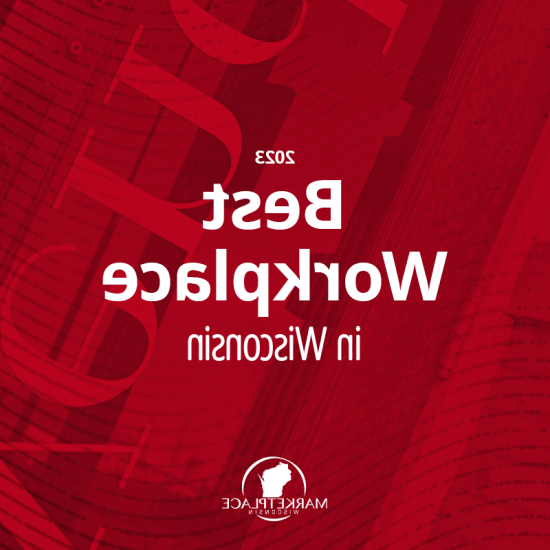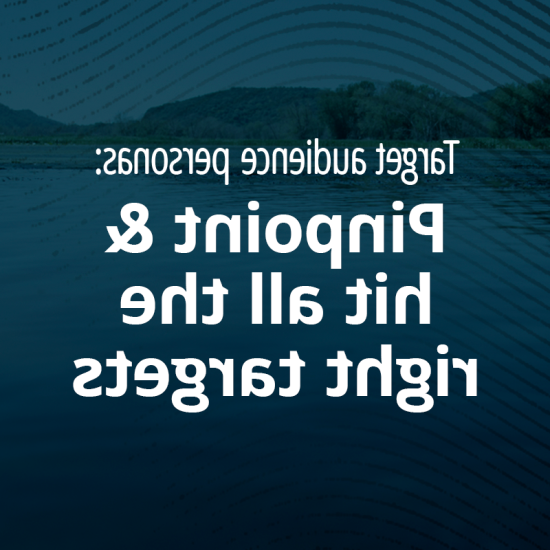
Reach and relate to your largest audience by using inclusive langu年龄
Inclusive langu年龄 uses words and phrases that highlight, 澄清和赞同不同的观点, 能力, 文化和背景. Inclusive langu年龄 helps more people feel welcome, respected and important. Communications professionals seeking to connect with, educate and inspire people must use inclusive langu年龄 in everything they do.
多样性与. 包容
多样性 and 包容 are often grouped together; however, 它们是两个截然不同的重要因素.
- 多样性 refers to all the ways people see and experience the world, 尊重种族差异, 性别认同与表达, 年龄, 种族, 残疾(可见和未见), 家庭或婚姻状况, 资深地位, 性取向, 教育, religion and all the ways people identify themselves.
- 包容 is best summed up as providing every person with a sense of belonging. 这意味着人们在做最真实的自己时感到舒适和支持.
Paired with consistent use of varied perspectives and accessibility measures, 包容性语言确保清晰, 公平准确的沟通.
包容性语言有助于人们认识自己,更好地理解他人
使用简单的, 中性和描述性措辞, inclusive langu年龄 represents and resonates with the widest possible audience. 它与新受众建立信任,加强现有关系,并且应该:
- Create the fullest picture of people's varied experiences and perspectives
- 是真实的
- Incorporate perspectives and context from diverse sources and audiences
- Make audiences feel competent, included, respected and accepted
- 让那些以前在传统叙事中失踪或被歪曲的人发出声音和可见度
- 要经常考虑沟通者
Inclusive langu年龄 challenges content creators to pursue new ways of thinking, 新能源, 新的角度和新的策略. 也许最重要的是, inclusive langu年龄 requires you to recognize and examine unconscious biases, 然后想办法克服它们. 这样做,你的内容会变得更强,更相关,更引人注目,更值得信赖.
Person-first or identity-first inclusive langu年龄?
在使用包容性语言方面, 你可能需要决定是先用“人”或“人”来描述个人或群体,还是先用“身份”来描述. 个人偏好vs. identity-first langu年龄 usually lies with the audience(s) being highlighted, 尤其是那些认为自己的经历对自己的身份和文化至关重要的人. 有些群体,比如聋人社区的许多人,实际上更喜欢身份优先的语言. 内容创作者不确定使用哪种类型的语言,应该向他们的观众寻求指导.
人本位的语言
Identity-first语言
No hard-and-fast rule defines which type of inclusive langu年龄 to use. 然而,以人为本的语言更容易被接受,因为它优先考虑人. 也, 以人为本的语言通常能与听众产生更强烈的联系,因为它让人觉得自己被重视了, rather than mere representatives of circumstance. If, 在向听众寻求指导之后, 你仍然找不到正确的答案, 美联社建议使用个人优先和身份优先的语言.
Best practices for specific types of inclusive langu年龄
生活和人的许多不断变化的方面最好用包容性的语言来描述. Remember and follow these overarching best practices when creating content:
- Life has no “normal” to define or make comparisons to
- All people should always receive equal treatment
- You can never be too thoughtful, precise, specific, accurate or fair
另外, 在描述特定情况或人群时,请记住这些最佳实践.
残疾的人
- Refer to a disability only if relevant to your subject matter
- 使用准确的, 中性, 具体用语:残疾人, 有[病症]的人, 坐轮椅的人使用轮椅的人
- 避免使用这些词:障碍, 残疾, 折磨, 遭受, 受害者, handi-capable, 残疾的, 有生理缺陷的, 精神错乱的, 精神病, 蹩脚的, 盲目的, 紧张性精神症的, 低能的, 智障, on the spectrum and similar cringe-inducing words
- 不要轻易使用与残疾有关的短语,例如:turn a 盲目的 eye or fell on deaf ears
疾病
- Use 中性, precise descriptions such as: He has kidney cancer. 她心脏病发作了. 他们正在接受莱姆病治疗.
- Avoid expressions with negative connotations, such as: He is battling cancer. 她是关节炎患者.
- Pay attention to capitalization—lowercase diseases such as diabetes, 肺气肿, 白血病, 肝炎, 等., 以人名或地理区域命名的疾病,只大写专有名词:艾迪生病, 寨卡病毒病, 等.
性别,性和性取向
- 理解并使用恰当的术语:
- 性别, 性, 性身份, 性别认同和性别表达并不意味着相同的事情,不能互换使用
- 特定术语具有独特而重要的含义,必须有目的性地使用
- Avoid using outdated or inaccurate terms (as well as slurs and salacious terms), 例如:异性, 相反的性别, 另类生活方式和同性婚姻
- Remember that queer may not always be an acceptable term: know your audience
- Use LGBTQ+ when referring to a collective group of lesbian, 同性恋, 双性恋, trans性别 and queer and/or questioning people, plus people of other 性ual and 性别 minorities. Do not use LBGTQ+ in defining a more specific population. Depending on context, LGBT or LGBTQIA may also be acceptable.
中性的语言
- Avoid using langu年龄 that emphasizes a single 性别. 使用:
- Police officer or firefighter instead of policewoman or fireman
- 劳动力而不是工人
- 主席而不是女主席/男主席
- 搜索而不是追捕
- 父母而不是母亲/父亲
- 配偶而不是丈夫/妻子
- 城市领导人,而不是城市父亲
- 男主角而不是女英雄
- Reword previously common phrases when possible, such as:
- She plays second base rather than second baseman
- 与其说他是黑发,不如说他是棕发
移民与迁移
移民 指以永久定居为目的来到另一个国家的行为. 移民 refers to leaving one’s own country to settle permanently in another. 移民指的是在一个国家内或跨境流动的人,通常是出于经济原因.
当写或谈论这些群体时:
- 使用中立、准确、具体的语言,不要忽视更大的语境
- 使用数字和事实
- Remember that definitions and perceptions of terms vary around the world
- 避免使用主观或贬义词:
- 的相关 比如危机, 冲击, 外星人, illegal immigrant (illegal immigration is acceptable to describe the action), 非法移民, 无证婴儿和锚婴儿
- 移民相关 危机、猛攻、非正常移民、连锁移民和推回等术语
老年人
- 使用older adult(s)或older person/people,而不是senior citizen(s)、seniors或elderly
- Be as specific as possible, such as: adults over 年龄 65
- Don’t use the elderly to reference a group of older people
比赛
- 记住,种族只是一个人身份的一部分,引起人们的注意通常是无关紧要的
- 避免一概而论、贴标签和污蔑
- Ensure visibility for all people—strive to accurately represent all people
- Do not write in a way that makes white the default race
- 请记住,种族相关的术语在不同的人群中有不同的解释和理解
宗教
- 避免一概而论、贴标签和污蔑
- Strive to accurately, precisely represent religious beliefs and practices
- 不要以一种使任何一种宗教看起来比其他宗教更好或更重要的方式写作
- 记住,不同的人群对宗教术语的理解和理解是不同的
健康与科学
- Maintain healthy skepticism when it comes to specific claims; always do your due diligence
- 如果有疑问,就去问专家
- 只要有可能, 让科学家/从业者和患者/最终用户都有发言权(无偿)
- 使用适合听众的语言. 例如, 什么时候用高血压代替高血压或心脏病发作代替心肌梗塞.
- 避免行话和陈词滥调
Tips for shaping an inclusive content strategy
Be thoughtful and thorough in creating inclusive content. 首先,问问你自己,谁的声音和观点被忽略了,应该得到更好的体现. 然后,把它们找出来,因为它们只会提高你的内容和对世界的理解. 探索与自己不同的想法,寻求他人的指导和意见. 专注于学习和成长,努力与尽可能多的人产生共鸣. 如果你犯了错误,承担责任,改正它,不要再犯.
Additional tips for creating inclusive content:
- Take time to understand new/diverse sources before you interact with them, 然后仔细听, observe the larger environment and ask lots of questions
- 仔细考虑你的受众:
- 他们的种族, 性别, 社会经济地位, 年龄, 地理位置, 性取向, 性别认同, 残疾的人, 教育水平, 宗教和政治派别
- 记住你的听众的兴趣, 需求和声音会有很大的不同,确保你反映了他们的兴趣, 需求和声音
- 只要有可能, ask people how they want to be described
- Choose words carefully and remember that alternative, more inclusive phrasing is almost always possible
- Avoid falling into stereotypes or relying on always-heard sources (for example, do not consult only female nurses or male construction workers)
- Don’t use dehumanizing mass terms (such as the mentally ill and the 年龄d)
- Present every source as important and credible
- Look for sources and voices in places you don’t normally look, 然后向这些来源询问其他来源
- 通过遵守网页可访问性指南和字体大小指南,使您的工作对所有人都可访问, 通过使用适当的语言
- Throughout every draft, evaluate your work and ask for feedback from others
在Vendi专家的帮助下,让你的信息与大多数人产生共鸣
你们的营销和广告努力必须跟上当今日益多样化和充满活力的世界的步伐. 为沟通带来最高水平的多样性和包容性需要不同的视角, 可访问性衡量——最重要的是——包容性语言,以确保清晰, 公平与准确. 通过仔细构建一个包容性的内容策略,并记住生活没有“正常”,你可以接触到大多数人,并与他们建立联系.
Vendi文案却 have decades of combined experience promoting varied organizations, products and services to highly diverse audiences through accurate, 用语言. 我们在这里帮助您创建包容性的内容,为您的组织带来新的兴趣和投资.


